Archives: expositions
les expositions
Gonçalo Duarte – Hiéroglyphes modernes
28.03 — 19.04.2025

Gonçalo Duarte (1935 – 1986) belongs to that generation of Portuguese artists whose destiny was marked by dictatorship and exile. Like many of his compatriots, he felt an early desire to flee an Iberian Peninsula that was not conducive to the development of new ideas.
After studying at the Beaux-Arts in Lisbon, Duarte left Portugal in 1955 to continue his education in Munich with Lourdes Castro and René Bertholo. Two years later he moved to Paris, where he settled permanently in 1959, thanks to a Gulbenkian scholarship and the support of his friends Arpad Szenes and Maria Helena Vieira da Silva. When he returned to Lisbon briefly to exhibit his work, he confessed to feeling ‘out of place and immersed in an enormous solitude’ (letter to Imre Pán dated 13 April 1964).
In Paris, Duarte became a central member of the KWY group, to which Abraham & Wolff devoted an exhibition in October 2024 (Autour de KWY: 1958 – 1964, curated by Anne Bonnin). Initiated by Lourdes Castro and René Bertholo, KWY brought together young artists in exile: the Portuguese António Costa Pinheiro, José Escada, João Vieira and Gonçalo Duarte, the Bulgarian Christo and the German Jan Voss. Together they run the magazine of the same name, a composite art object made up of original serigraphs, photomontages, collages, postcards, poems and theoretical texts. Duarte’s contributions take the form of silkscreens, reflecting his interest in informal and lyrical abstraction.
In 1963, the artist started an important series of figurative canvases and drawings inspired by Surrealism. In them, he used a repertoire of obsessive motifs composed of snakes, eggs, smoking chimneys, changing bodies and female figures, cubes and pyramids, spaceships and ships. All these elements and symbols collide to form rebus whose solution eludes us, as in a dream. As the artist himself puts it: ‘Painting or drawing is to give concrete form, step by step, to a dream’. These reveries led the Hungarian critic and intellectual Imre Pán, whose interest in KWY manifested itself in several editions dedicated to the members of the group, to say that Duarte ‘transforms the smallest signs of life, vital elements, ideas and gestures into modern hieroglyphs. […] He is both juggler and architect: his props, once thrown, stop in mid-air and rise into a strange edifice. You get the impression that Gonçalo is building a new Tower of Babel where everyone speaks the same language” (Imre Pán, Morphèmes, Paris, 1968).
Abraham & Wolff is pleased to be exhibiting a previously unseen group of drawings by Gonçalo Duarte covering the period from 1961 to 1981. Hyéroglyphes modernes provides an insight into the artist’s development from abstraction to these highly personal dreamlike compositions.
We would like to express our warmest thanks to Garance Duarte for opening up her father’s archives to us, and to Sophie Pán for her generous support.





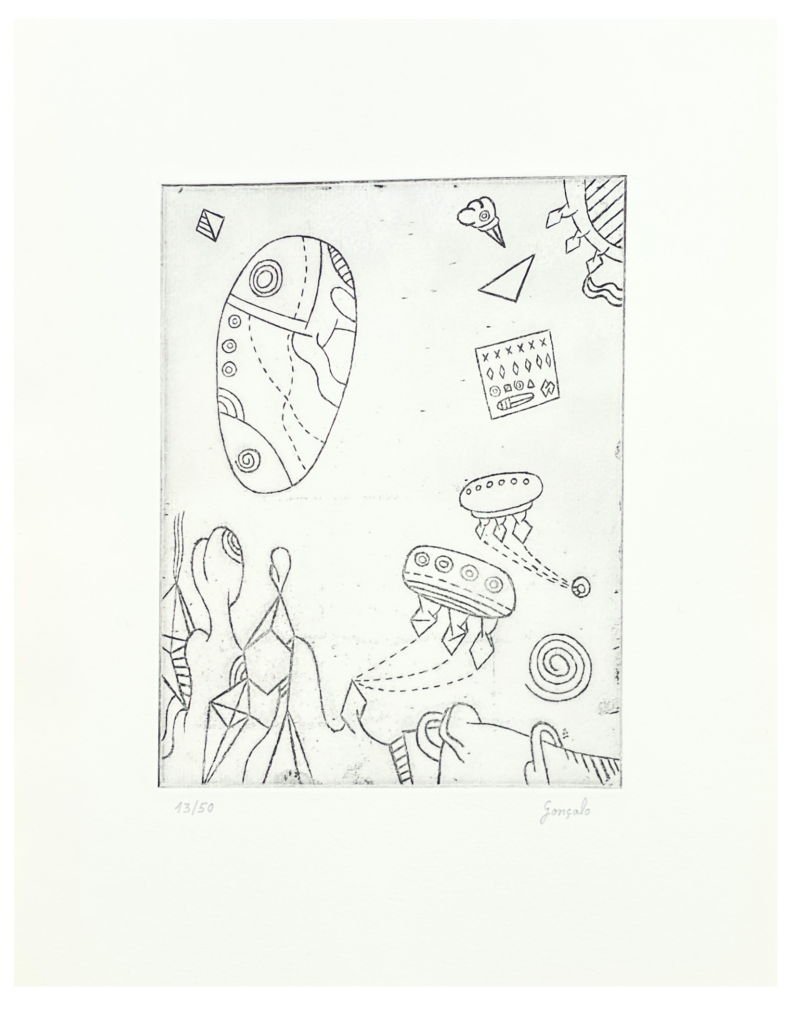

Laura Lamiel – L’Herbier




Abraham & Wolff is pleased to present a new exhibition by Laura Lamiel. The artist displays an installation specially designed to house her latest series of drawings, L’Herbier. It is based on a matrix of one hundred sheets, from which unframed and framed drawings seem to emerge, along with a poem written by the artist herself. These drawings extend certain themes explored in the Territoires intimes series, such as the root and the rhizome. Inscribed in a subversive history of herbarium practice, they represent an imaginary flora of hybrid and suggestive forms, whose inflorescences unfold following the movements of the ink.
A major artist on the contemporary French scene, Laura Lamiel has been exhibited at La Verrière (Brussels, 2015), the CRAC Occitanie (Sète, 2019) and the Palais de Tokyo (Paris, 2023). She was awarded the AWARE honorary prize in 2022.
We warmly thank Galerie Marcelle Alix (Paris) for its close collaboration.
Stone Lights with William Anastasi, Irene Kopelman, Laura Lamiel, Camille Vivier, Alfredo Barbini, Roberto and Glauco Gresleri, Giuliano Cesari
17.01 – 08.02.2025


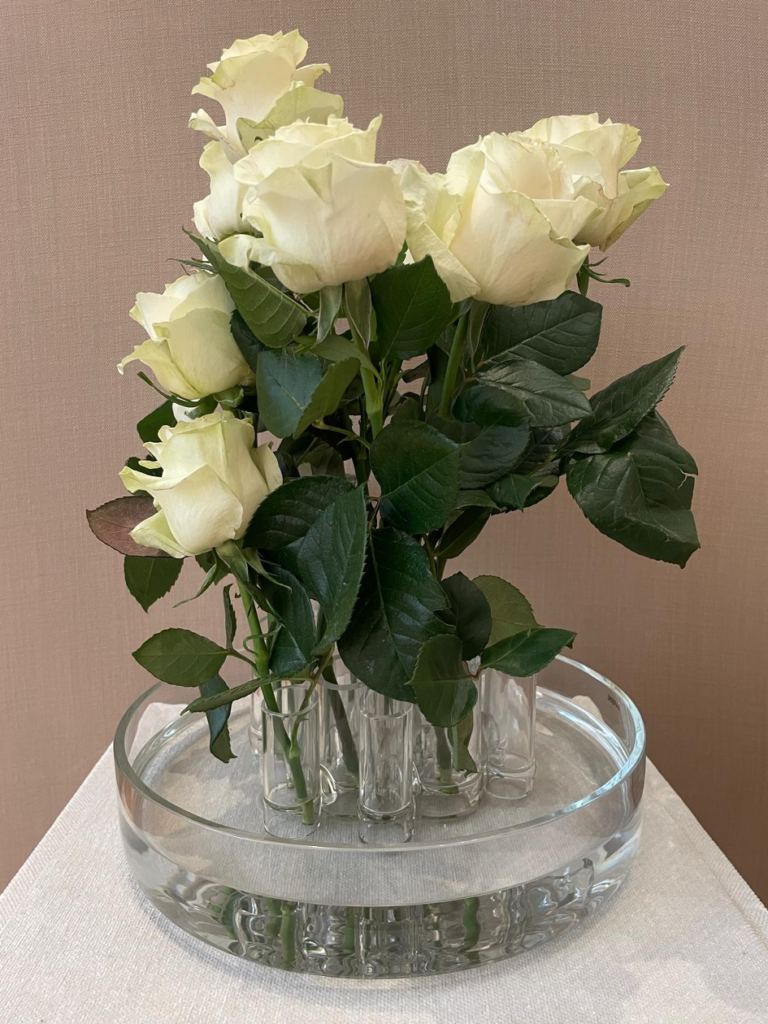
For this new exhibition, Abraham & Wolff is delighted to present works by Laura Lamiel, Irene Kopelman, Camille Vivier and William Anastasi, as well as a selection of design pieces by Alfredo Barbini, Giulinano Cesari and Roberto and Glauco Gresleri.
Our warmest thanks to Camille Vivier and Marcelle Alix, Paris, and Compasso, Milan, galleries for their generous collaboration !
Cabinet Cabinet Curiosity Curiosity
Michele Chu, Chan Ting, Sasaoka Yuriko, Magdalen Wong, Xi Jiu, Zheng Mahler
Curated by PHD Group, Hong Kong
6 Dec – 11 Jan

The curiosity cabinet, or kunstkammer, has for centuries enthralled audiences with its arrays of wonders and oddities. Originating as privately kept miniature rooms or cupboards, the cabinet emphasized the abnormal, showcasing objects considered foreign to Occident intellectuals, and selected by wealthy royals, scholars, or merchants. This Orientalist history—and the elite few who decided what went into them—still dictates much of how we approach object and display today, with curiosity cabinets now existing in the public sphere as institutions and museum spaces.
But what does it mean to be curious about an object from another place, dislocated from its context? How can the gaze of wonder confront and challenge the gaze of exoticisation and othering? Can curiosity be removed from concepts of ownership and possession? These questions are foundational to “Cabinet Cabinet Curiosity Curiosity,” a group exhibition curated by Hong Kong-based gallery PHD Group and hosted at Abraham & Wolff in Paris.
To name something once is to define it; to name it twice invokes a soft confusion, similar to when one repeats a word too many times, detaching it from meaning. The abstracted doubling in the title notes the experimental links between the artworks, and also playfully hints at the collaborative nature of the two galleries performing in tandem—one playing the host, presenting a literal cabinet that hints at its past as an antique drawing room, and the other playing guest, providing its curious contents.
The artist duo Zheng Mahler presents abalone-encrusted porcelain pieces from their “A Season in Shell” project, in which they trace the abalone’s trade route from Africa to Hong Kong via Switzerland in a two-fold attempt to understand the mechanical workings of our sociopolitical exchange culture. Sasaoka Yuriko, from Japan, asks how we might be implicated in the capitalist labor of animals with a small singing bear that asks, ever so sweetly, to be employed in a work force. Xi Jiu evokes symbolism in paintings out of her Beijing studio. Hong Kong artists Chan Ting and Michele Chu show new works that engage in the relationship between material, form, and the artist’s hand. Magdalen Wong, also from Hong Kong, plays with the taxonomic naming of plants and the mass market, painting in great detail the plastic flowers she collected from various places over the years.
With this wide range of works, “Cabinet Cabinet Curiosity Curiosity” delivers a missive directly air flown from Asia in an attempt to reverse and banish the cabinet’s problematic historical entanglements. Open-ended and fluid, the displays and selections do not express the stiff stereotypes of cabinets of old, but instead asks what it means to be curious today. We are left only with the barest suggestions of its charming form, and an invitation to open it up and take a look.
PHD Group, November 2024
Catherine DeLattre
Shoppers, Broadway Upper West Side, NYC, 1979-80 and other corners
Curated by Cay Sophie Rabinowitz
Oct 30 – Nov 30, 2024






Catherine DeLattre grew up in Monongahela, Pennsylvania, a small town near the heavily industrial area of Pittsburgh. In the late 1960s and early 1970s, she studied archaeology at Kent State where a course in basic photography was a requirement for recording in archaeological digs. That led her to the Art Photography program at Purdue where the focus was on black-and-white, but where DeLattre became more interested in color under the influence of her teacher Vern Cheek, and the then contemporary color work of photographers such as William Eggleston, Joe Maloney, Joel Meyerowitz, Jan Groover, Eve Sonneman and Joel Sternfeld. After a series of teaching gigs that took her from Rockport, Maine to Poughkeepsie, by 1979 DeLattre had saved enough money to move to New York City where she found a $200/month sublet on the Upper West Side and a part time job teaching darkroom at ICP. The colorful, eccentric, mostly elderly, women that shopped and lived in that neighborhood were her first impression of New York City. In DeLattre’s own words, “they looked so put together with makeup, outfits, and hairdos but at the same time so vulnerable. I related to that. I loved how they dressed up to go to the bank and the grocery store and run every day errands.” Almost every day from 1979 through 1980, she shot 120 Kodak color negative film with a TLR Mamiya which allowed her to remain anonymous when capturing street photographs of passersby. “It was an opportunity to photograph a passing generation. … Color was integral to my images in mood and description of the people and time. Color is still my main focus today, although in a more formal way than my street photos of the 1970s and 1980s.” Cay Sophie Rabinowitz
As part of its participation in the PhotoSaintGermain festival, which opens on October 30, 2024, Abraham & Wolff is pleased to exhibit the work of Catherine DeLattre in collaboration with OSMOS, NYC, through a selection of photographs from the series Shoppers, Broadway Upper West Side, NYC, 1979-80.
Autour de KWY : 1958 – 1964
Manuel Alvess, René Bertholo, Lourdes Castro, Christo, António Costa Pinheiro, Gonçalo Duarte, José Escada, Maria Helena Vieira da Silva, João Vieira, Jan Voss
Curated by Anne Bonnin
October 4 – October 26




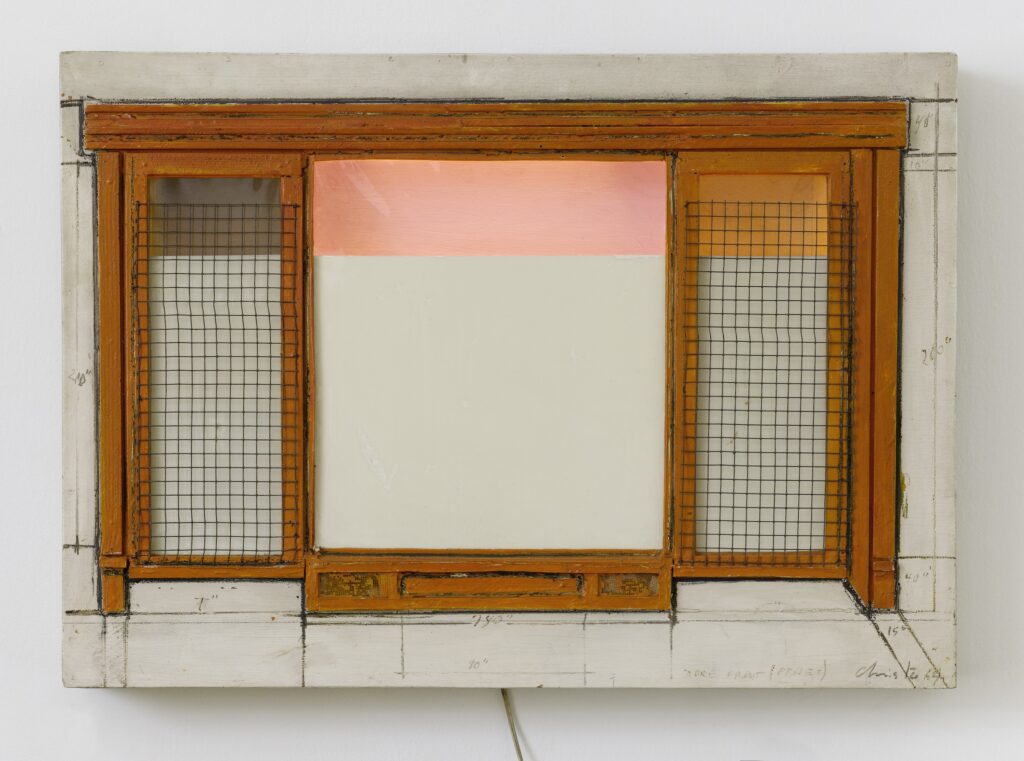


The KWY magazine (1958-1964) was a singular editorial adventure led in Paris by 8 young foreign artists, newly arrived in the capital. Its founders were Portuguese artists Lourdes Castro, René Bertholo, Costa Pinheiro, Gonçalo Duarte, José Escada and João Vieira, soon joined by Bulgarian Christo and German Jan Voss. They were exiles, some fleeing a dictatorship, others a country ravaged by war and Nazism. They chose to settle in Paris, which then radiated the aura of a cosmopolitan cultural capital.
The magazine is a rich, composite art object featuring original silkscreens, photomontages, collages, postcards, soft discs, poetry, theoretical texts, unpublished works and precious documents. Through its 12 issues, we follow the evolution of a group of artists from the informal, gestural or matierist abstraction on display in galleries at the end of the 1950s, to the new art trends in which the group’s members participated – Nouveau réalisme, Nouvelle figuration, Pop art, gestural abstraction, Lettrisme, Fluxus, Art cinétique, poésie concrète, etc. In the background, we can make out their personal, dissimilar paths within the Parisian or international networks, which were then pursued independently in Paris, London, Lisbon, Munich or New York.
First of all, the title, in its lapidary strangeness, intrigues: is it an acronym, an enigma? Voluntarily cryptic, it sounds like an avant-garde code name. However, for the Portuguese who have chosen it, it is endowed with particular meanings: absent from the Portuguese alphabet (until a recent reform), these three consonants take on a sharp meaning, an ironic and political twist, under Salazar’s dictatorship. This absence at the heart of the language speaks both of exile in one’s own country, stifled by censorship, and of exile abroad, where one’s friends are missing. Indeed, KWY was initially conceived as a letter addressed to absent friends… Functioning as both a witticism and a password, this title condenses the avant-garde aspirations and energy that these young people put into their magazine. Its evolution reflects the movement of its members within Parisian and transnational artistic networks.
Perfectly in tune with the times, KWY reflects the artistic and social mutations of a transitional period between the war-torn late 1950s and the forward-looking early 1960s, full of optimism and revolutionary desires.
When you browse the issues and look at the attractive, different covers, you’re struck by the magazine’s heterogeneous, cobbled-together character. After all, KWY is an artisanal magazine, entirely hand-made and screen-printed in Lourdes Castro and René Bertholo’s tiny apartment. Heterogeneity permeates every aspect of the publication: paper, format, typography, cover, composition, layout and so on. No two issues are alike. The magazine adopts no recognizable graphic identity or aesthetic; rather, it follows the rhythm of life, of encounters and affinities and, therefore, of the new practices that emerge, as witnessed by the guest list, which diversifies and increases remarkably as the number of pages and copies grows – from 60 to 300, with a peak of 500, but still produced by hand and in a 20 m2.
The originality of KWY’s work lies in its inventive and spontaneous use of screen printing, a process that was still little used in the late 1950s. Motivated in part by cost, the choice of this technique is above all for its experimental potential – color, texture, weft, etc. – which KWY plays with obvious glee. In particular, it exploits the plastic resources of a reproduction process that produces the unique, asserting its specificity with the superlative humor of the advertisement: “The only magazine to offer an original hand-silk-screened work.” Shortly anticipating the developments of this technique by Pop art, it could be described as pre-pop. Nevertheless, KWY is distinguished by an unbridled inventiveness that denotes an improvisation typical of DIY and home economics, but also of youth.
The presence of the hand lends a lively allure to this whimsical publication: technical texts – summaries, bears, titles, announcements of publications or exhibitions, etc. – are all part of the story. The hand is the hallmark of a collective in which individualities mingle on equal terms – everyone puts their hand to the grindstone, bringing their own touch to a highly tactile object. In issue no. 6, which marks a milestone in its development, the editorial team explains its origins, making it clear that the group, which was born of the magazine and has grown up around it, does not represent any particular trend or movement. Thus, the varied, profuse style that marks the magazine’s singularity stems from a disparity intrinsic to the group. KWY was first and foremost a laboratory for experimentation, in the form of a quasi-collective work, displaying a joyful independence from the various aesthetic currents: the freedom for each to choose his or her own style.
The last opus came out in 1964 – it’s the natural fate of magazines and groups to disperse, but it bore fruit, building a bridge between Portugal, Paris and abroad, and weaving around it a web of transcontinental relationships that were, to say the least, varied.
The Autour de KWY exhibition, following on from the Lourdes Castro retrospective I organized in 2019 at the Mrac in Sérignan, brings to light the subterranean dynamics, the forgotten or more confidential filiations of a Parisian and transnational history. As part of my research into Portuguese artists active in Paris in the 1960s-1980s, it includes works by Manuel Alvess (1939-2009), who arrived in the French capital in 1963, where he lived until his death. Retired from the art world, he continued his conceptual and pictorial work, taking over from a Franco-Portuguese migration linked to the dictatorship.
Anne Bonnin, September, 2024
Bruno Botella – Fromage de nuit










Bruno Botella pursues an experimental body of work in which sculpture and drawing play a central role. He develops performative devices that allow him to disengage from himself while capturing the imprint of his psychic activity in a sculpted object. Boxes for sculpting blind, a bed with a hole in the mattress giving access to a box filled with clay hidden under the bed base, sculpture shaped in an aquarium filled with leeches, the use of anaesthetic clay or hallucinogenic modelling clay of his own invention, are just some examples of the devices and materials that Botella uses to free himself from his perceptions, sensations and even his conscience, in order to give form, as he puts it, to ‘figures without kinship or species’.
For this exhibition, he has imagined a new device, Incubat, that enables him to sculpt while he’s sleeping a modelling paste mixed with medicinal herbs reputed to stimulate dream activity. The public will also be able to activate a Heaume, a sculpture inside which the user can insert his or her head to inhale amyl nitrite vapour (poppers) while watching a cartoon specially designed by the artist.
Mirroring these plastic and sensory experiments, the artist uses a calligraphy brush to produce drawings of great graphic freedom, through which he develops a strange and unexpected hallucinatory universe. Several of his most recent sketchbooks will be on show.
Francisco Tropa – Panta Rhei




Entitled Panta Rhei (in reference to Heraclitus’ famous formula meaning “everything flows”, in the sense of “everything passes”), these silkscreens belong to a series of works by Francisco Tropa based on the themes of mimesis and play. They are composed of silk-screened geometric motifs, with cardboard cut-outs representing stones arranged inside them. These stone images can be freely rearranged by simply opening the frame, thus forming new compositions. They evoke other works by the artist in the form of transparent boxes containing natural pebbles and their bronze replicas. The pebbles and bronze casts can be freely extracted and arranged to create arrangements reminiscent of landscapes. A participatory device that unfolds here in graphic works.
Miriam Cahn, Eugène Carrière – schreiender säugling






Eugène Carrière (1849 – 1906) was one of the most singular painters of the late 19th century. Unlike the artists and movements of his time, he explored a tight register, both in his means of expression and in his choice of subjects. Using a palette limited to shades of brown, he painted sketchy compositions in which the figures are only shaped by chiaroscuro. The forms emerge from a background devoid of scenery or detail, far from any description or narrative. He painted a few landscapes, still lifes, numerous portraits and, above his own family. A painter of intimacy, Carrière tirelessly captured his wife and children in genre scenes of which he gave multiple variations.
Alongside the paintings by Eugène Carrière, a digital slideshow by Miriam Cahn gives the exhibition its title: schreiender säugling [crying child]. Composed of images edited together to compose a film, the slideshow shows sculptures in various states. A child’s head, mouth gaping. Breasts. These two elements are brought together in a simulacrum of breast-feeding. The sculptures still bear the traces of the hands that shaped them. The artist’s hands appear in some of the photographs, sometimes modelling the forms, sometimes crushing them with the fist. A gesture that, in the ambivalent encounter between the real body and the sculpted body, creates an equivocation that goes well beyond the apparent theme of a child suckling at the breast.
Imre Pán, A historical collection
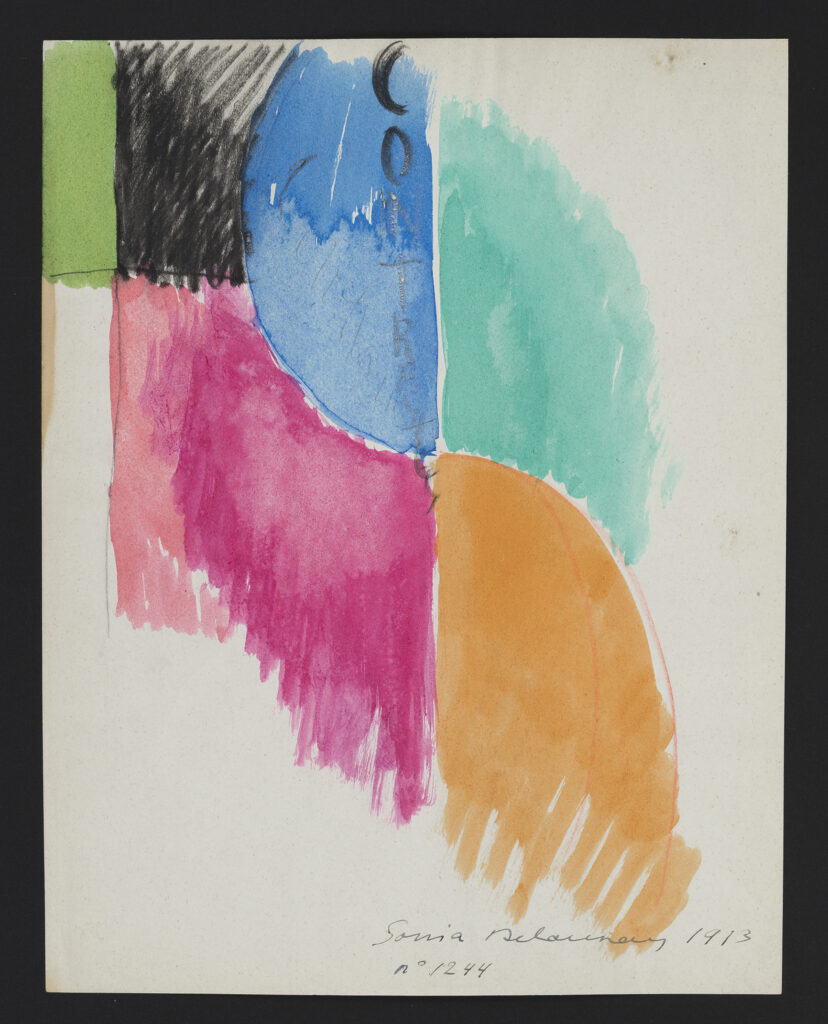


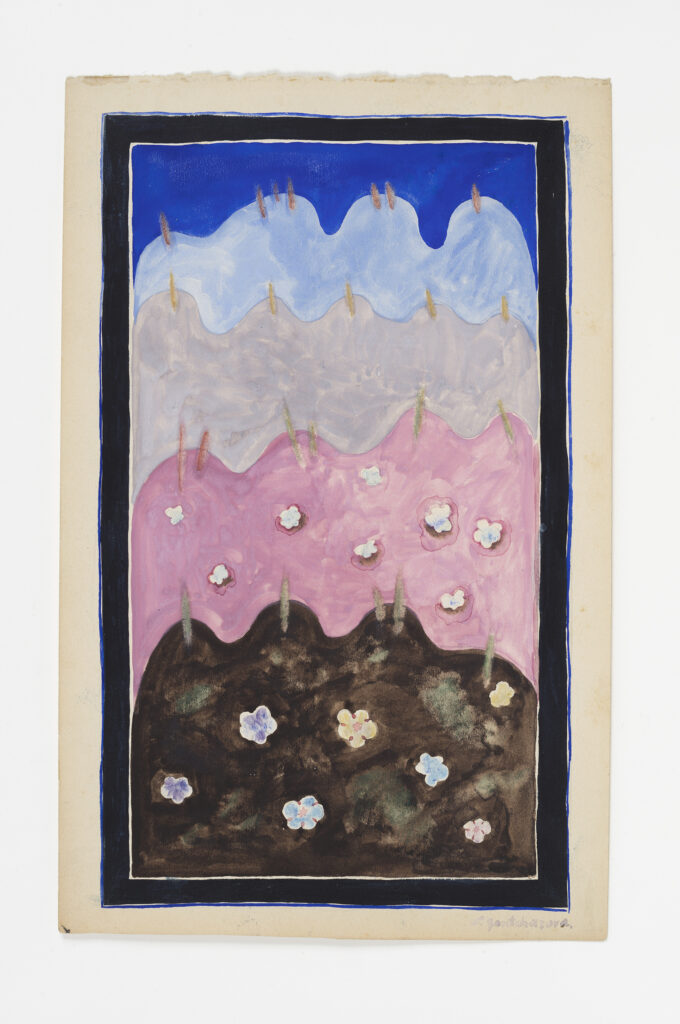
An art critic, curator, bookseller, art publisher and magazine creator, Imre Pán (1904 – 1972) was one of the leading figures in twentieth-century Hungarian artistic life. An early participant in the avant-garde movements, he and his brother founded several magazines to which many Hungarian and European painters and artists contributed, including Jean Arp. In 1935, Pán opened a bookshop-gallery that became a popular meeting place for the Budapest intelligentsia. After the war (during which he had to live in hiding), Pán organised no less than thirty-eight exhibitions in the space of three years. In particular, he exhibited the surrealist painter Jacques Doucet and the Dutch artist Corneille. It was also the meeting place for the European School (of which Pán was one of the founders), a gathering of intellectuals aiming to open up Hungary culturally. This effervescence lasted until 1948, when Stalin’s cultural policy led to the dissolution of the European School and the closure of the bookshop.
In 1957, following the brutal repression of the Budapest uprising, Pán decided to leave Hungary and settle in Paris. There he met up with well-known artists such as Doucet and Corneille, as well as the Hungarian artistic diaspora: Étienne Hajdu, Anton Prinner, Árpád Szenes, Vasarely and Endre Bálint. He also came into contact with artists linked to the new avant-garde movements emerging on the Parisian scene in the late 1950s and early 1960s. Before long, Pán was actively involved in the Parisian art world. During the 1960s, he organised numerous exhibitions in collaboration with friendly galleries (such as La Main Gauche, La Roue and Le Point Cardinal), showcasing the work of artists as diverse as Jean Arp and Sophie Taeuber-Arp, Georges Braque, André Masson, Fernand Léger, Sonia and Robert Delaunay, Max Ernst, Hans Bellmer and Unica Zurn, Natalia Goncharova and Mikhail Larionov, Corneille, Pierre Vasarely, Serge Poliakoff, André Marfaing, Colette Brunschwig, Marcelle Cahn, Roberto Matta and Margit Anna, to name but a few. Most of them featured in the 150 or so art publications he edited from 1960 onwards, and which he developed and expanded until his death in 1972.
While the Galerie Jocelyn Wolff pays tribute to his career as an art publisher (Imre Pán. Une histoire artistique et éditoriale européenne dans le Paris des années 1960, from 3 March 2024, curated by Marjorie Micucci), Abraham & Wolff is honouring another facet of his prolific activity: that of collector.
Combining his in-depth knowledge of the avant-garde with his great sensitivity, Imre Pán amassed an exceptional collection throughout his life. Both in Budapest and in Paris, he acquired works from gallery owners as well as from artists he admired and whose studios he liked to visit. He mainly bought small-format works on paper, sketches and preparatory drawings, fascinated by these works in which art is in the process of being made.
Described as a “historical collection” by Imre Pán himself, the ensemble we are presenting here is just one part of his collection. It comprises 53 works on paper covering a period from 1910 to 1968. Two generations of artists come together to form a veritable panorama of European art from the first half of the twentieth century and the post-war period, all trends taken together. It has to be said that the story Pán tells here has, for the most part, been validated by posterity.
With works by Natalia Goncharova, Mikhaïl Larionov, Roger de La Fresnaye, Sonia Delaunay, Albert Gleizes, Otakar Kubín, Suzanne Duchamp, Max Jacob, Leopold Survage, Ossip Zadkine, André Bauchant, Sophie Taeuber-Arp, Bela Kadar, Marcel Gromaire, Léon Tutundjian, André Derain, Pierre Tal Coat, Francis Picabia, Vassily Kandinsky, Maurice Estève, Georges Valmier, Salvador Dalí, Lajos Vajda, Hans Reichel, Yves Tanguy, Gaston Chaissac, Wilfredo Lam, Jean Arp, Christine Boumeester, Max Ernst, Jean Fautrier, Jacques Villon, André Heurtaux, Henri Matisse, Wols, Victor Vasarely, Óscar Domínguez, Auguste Herbin, Corneille, Pierre Soulages, Camille Bryen, Raoul Ubac, Roberto Matta, Henri Michaux, Hans Bellmer, Maria Helena Vieira da Silva, Alberto Giacometti, Asger Jorn and Pablo Picasso.
Jocelyn Wolff and Samy Abraham would like to extend their warmest thanks to Sophie Pán, who opened up her father’s archives and collection to us in preparation for this exhibition.
